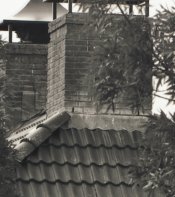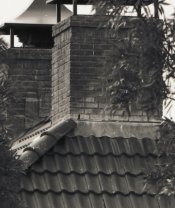Hasselblad Mutar 2x compared to Vivitar 2x teleconverter for Hasselblad with Sonnar
Hallo,
I read all the comments about the Vivitar teleconverter for Hasselblad. I tested it in comparison with the Mutar 2x.
For testing I used EOS 5 D II as digital back. The results are practically similar with those on slide film.
The lens was the 250 mm 5.6 Sonnar. It is a very well corrected lens, with maximal performance wide open. Stopping down the lens does not improve the performance significantly.
The Mutar was clearly superior.
Vivitar : at 5.6 ( lens wide open) the image was sharp, but marred by visible stray light, which reduced the cotrast and the colour saturation.
at 8.0 the image improved in sharpness, there was still stray light present.
at 11.0 the sharpness decreased a little, but there was practically no straylight more, the contrast and saturation were much better.
at 16.0 same result
Mutar : at 5.6 the image was very sharp, no stray light, excellent contrast and color saturation, warmer rendition that the Vivitar.
at 8.0 maximal sharpness, all othe parameter identical
at 11 sharpness decresed slightly, all othe parameter identical.
at 16.0 same result
Impressive was the fact that all the images were identical in saturation of colour and contrast with the Mutar.
The Mutar is larger and heavier. IMO there must be some apochromatic correction present, because the color saturation and contrast were maintained at all apertures of the lens.
The lens itself performed better on the Mutar when it was stopped down one fstop. That means that the combination lens-Mutar works better at this f-stop.
I am still curious why the image was less sharp at 11 and 16, I suspect refraction, amplified by the converter. The lens itself ,used separately, has practically
no sharpness loss till f 22.( goes to 45.)
I must test the combination again using a heavier tripod ( i used a Gitzo 2.5 kg and an Arca Monobal as head). I hadpractical no vibration, but I did not use a mirror lock-up. The speed was 1/125 for f stop 5.6, 1/60 for 8.0 ( maximal sharpness9, 1/30 for 11.0 and 1/15 for 16.0. The last ones are considered to be
malignant speeds for telephotography. Therefore I should increase the film speed from 125 ASA to 400 ASA, so that when the lens is stopped down, the 11.0
would be coupled with 1/125 and 16.0 with 1/60.
My preliminary intention was testing the two teleconverters together.
The Mutar is IMO clearly better with the Sonnar 250. The othe lenses which the Mutar would be combined are the 150 mm Sonnar, the 80 mm Planar and
perhaps also the 120 mm S Macro Planar. The Sonnar comes as 4.0 and 2.8 (F lens), the Planar also as 5.6 and 4.0. There is also the Planar 110 mm 2.0
and more telelenses. The most important is the 500mm 5.6.
The Vivitar is a good choice for compact lenses ( 80 mm, 150 mm) when the stopping down 2 f-stops is possible and when the photographer does not wish to
invest 400-500 E in a converter , when for the money it is possible to get a 2 good lenses.
I remember a test of the Vivitar with the Sonnar 150 mm 4.0, and the result was good enough. I intend to test this myself some day, but it has no practical sense for me now, since the Sonnar 250 is such a fantastic lens.
Regards
weth










 especially for portraits.
especially for portraits.

